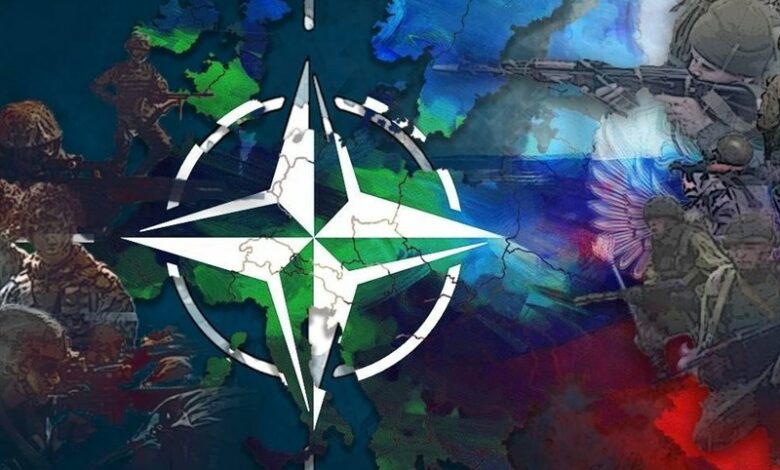The Baltic, the Achilles heel of the NATO military alliance

| In an article, a Western media pointed to the countries of the Baltic Sea region, due to their border with Russia, as the Achilles heel of the NATO military alliance, which there are many concerns about. |
According to the international group Tasnim news agency, the German newspaper “Tags Shaw” wrote in an article: In Estonia, Latvia and Lithuania there is a lot of concern that Russia will attack them as well. And therefore, serious preparations are being made there to defend the Baltic.
In this area, the Suwalki Rift, a narrow strip of land about 65 kilometers wide between Poland and Lithuania, is considered a weak point for NATO. to be At one end of this strip is Belarus and at the other end is the Kaliningrad region of Russia. Surrounded in the southeast, Belarus is strategically in a vulnerable position. That is why it can become an ideal target for Russian attack in the event of a military conflict with NATO. Since the start of the war in Ukraine, fears have grown in the Baltic states that they could be the target of the next attack.
Lithuanian Foreign Minister Gabrielius Landsbergis said earlier this week in Brussels: “The Russians are inside us.” . They will destroy Ukraine. And who knows what else?”
He emphasized: “If Ukraine falls, it will be clear to everyone that we are next. Putin will not stop, he cannot stop.”
So Lithuania prepares for war. More than 3,300 shelters have been created in the last year and a half, for example, in the subway or schools of this country.
Agne Bilotait, the Minister of the Interior of Lithuania, said in this regard: “But this is not enough: “We continue The list is not finished.” The emergency shelters we have now can provide temporary shelter for more than 900,000 people, which is almost a third of our country’s population.
He said fire and rescue services are also responsible. It should also be ensured that the people of Lithuania know where they can run to in case of emergency. Baltic people should not only look for protection, but should also defend themselves. Survival courses prepare students on how to provide first aid and handle weapons. The Baltic countries want to build defense facilities together on their borders with Russia and Belarus. According to the decisions taken from 2025, a system of trenches and defense lines will be created.
Supporting Ukraine is also considered one of the important components of self-defense in these countries. Latvia has so far spent a total of 1 percent of its GDP on this, Latvian Prime Minister Ovica Silina said on Thursday.
Baltic countries also want to better protect themselves against hybrid attacks in the future. to arm It was recently revealed: the windows of the interior minister’s car and a journalist’s car were broken, and historical monuments were damaged last year by order of Russia in Estonia. It’s happening right in the middle of our communities. We make them public so that other countries can also recognize these patterns. He claimed: Russia works very well in creating chaos and division in our societies.
This Estonian official has a tough stance against Russia and is considered one of the most committed supporters of Ukraine. His name was recently on the wanted list in Moscow. But Kalas stressed at Tagus Teman that he will not let Putin intimidate him. He emphasized: “He wants us to be afraid. But that means giving him what he wants. That’s why we shouldn’t be afraid.”
But according to people who live along the Suwalki corridor This is easier said than done. “Yes, we are afraid. It’s terrible,” a Lithuanian citizen living in the sleepy town of Liubavas told Lithuanian radio. It paralyzes communications and complicates military and humanitarian aid.
For the Russian Federation, the Suwalki Gap is of strategic importance because it is the land and air communications that connect the Kaliningrad region to the main part of Russia. . In addition, the headquarters of the Baltic Fleet of the International Monetary Fund of the Russian Federation is located in Kaliningrad.
Following the first Russian invasion of the eastern regions of Ukraine in 2014, which ultimately led to the illegal annexation of the Crimean Peninsula. became Russia, NATO members, especially the allies of this military alliance in Eastern Europe, were extremely worried about their security situation.
After that, initial estimates indicated that if a similar attack on NATO allies in Eastern Ukraine Russian forces can enter Tallinn, the capital of Estonia, and Riga, the capital of Latvia, within 36 to 60 hours; An incredible speed that limited the ability of the Western Allies to react effectively.
The countries of the Baltic Sea basin are located in Northeast Europe and include the countries of Lithuania, Latvia and Estonia.
end message/
| © | Webangah News Hub has translated this news from the source of Tasnim News Agency |


